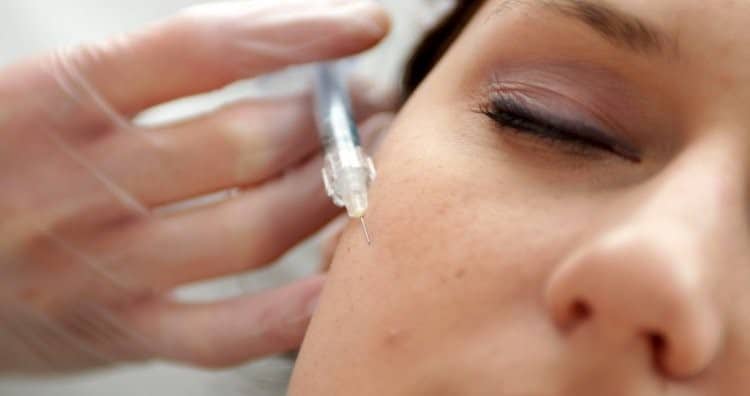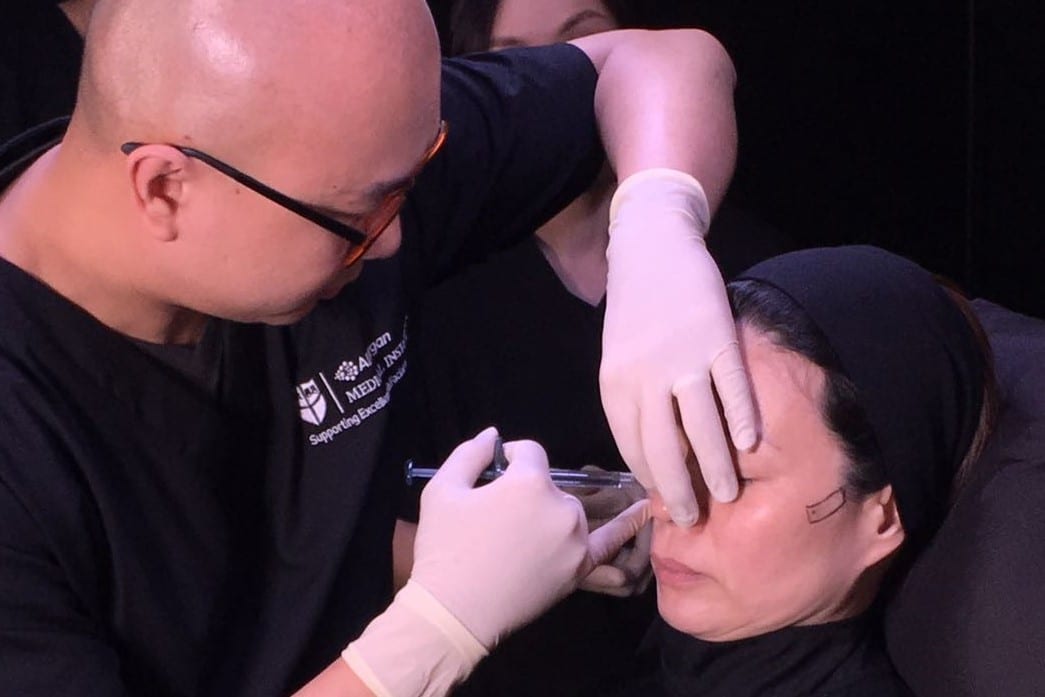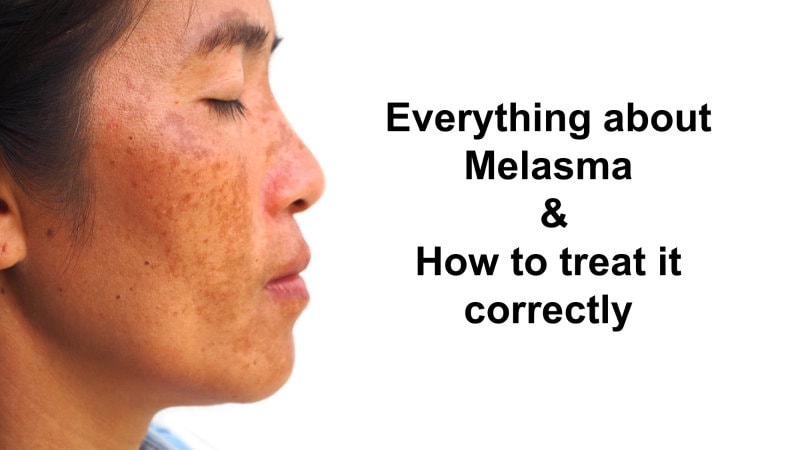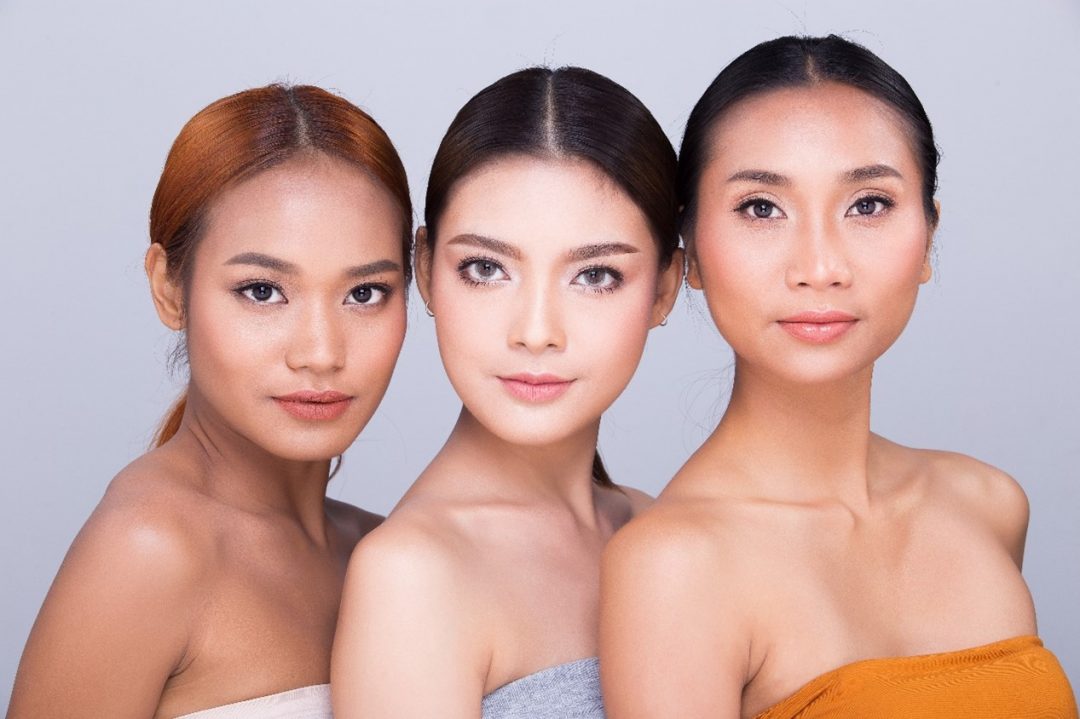
As beauty aesthetic trends start to take hold in Singapore (a predominantly Asian population), it is important for the Asian community to understand the unique traits that set Asian skin apart from their Caucasian counterparts.
Based on scientific research and studies, here are some ways in which the Asian skin differs from other ethnicities.
5 Unique Characteristics of Asian Skin
1. Asian Skin is More Acne-Prone
Unfortunately, Singapore’s tropical climate (a combination of heat, humidity and intensive UV radiation) inevitably triggers inflammatory acne flare-up, otherwise known as acne tropicana or tropical acne [1,2].
A major environmental factor affecting our skin is ultra-violet radiation.
Ultra-violet radiation has been reported to cause increased oil production by the sebaceous gland, worsening our skin texture, and increasing the number of comedones [3].
Ultra-violet radiation can also suppress the natural immune response of the skin.
As a consequence, skin natural barrier may be altered and P. acnes, the bacteria that is known to cause acne formation, overcolonize the skin causing flares of acne [4].
2. Asian Skin Contains More Melanin
In Asian skin, pigment-producing cells are more active.
With increased cellular activity to form melanin, pigmentation forms more easily in Asian skin than their Caucasian counterparts with the same amount of stimulation (e.g. ultra-violet radiation).
This stimulation can also come in the form of inflammatory skin conditions (e.g. acne, eczema or psoriasis), or even external trauma to the skin (e.g cosmetic lasers, chemical peels, energy devices like Thermage, etc)
Susceptible individuals develop a condition called post-inflammatory hyperpigmentation (i.e. increased melanin production on areas of skin which are “damaged” by treatments or existing skin conditions).
Post-inflammatory hyperpigmentation can last from months to years and may significantly impair the lives of individuals [6].
3. Asian Skin is More Sensitive
Large scale population studies have demonstrated that self-reported skin sensitivity does not seem to vary across different ethnicities.
However, adverse skin reaction to cosmetics appears to be significantly higher in Asian (33.0%) than in Caucasian subjects (11.3%).
The incidence of retinol sensitivity is also higher in Asians than in Caucasians [7].
Hence, keep in mind that your aesthetic doctor should take note of skin sensitivity as an important factor when selecting suitable treatments for you.
4. Asian Skin Develops Scarring More Easily
Asian skin in general has darker skin phototypes (Fitzpatrick III and above) as compared to Caucasian skin [8].
Studies have found that darker skin increases the risk of scar formation and that Asian skin is characterized by increased scar tissue formation and collagen deposition during wound healing [9].
As a result, Asians are at higher risk of hypertrophic scars like keloids and hyperpigmented scars after skin injury.
5. Asian skin is prone to certain hyperpigmentation conditions
In terms of ageing, the Asian skin has more photoprotective factors against the ultra-violet radiation versus their Caucasian counterparts.
This photoprotection trait, however, results in the skin developing more pigmentation as the individuals’ ages.
Conditions like melasma, sunspots and aged spots are more common. In addition, certain acquired pigmentary conditions tend to be more prevalent in Asians, like Naevus of Ota in East Asians, and pigmentary demarcation lines (PDL) in certain population groups of South Asians.
Because of higher melanin activity in Asian skin, it is also more prone to developing post-inflammatory hyperpigmentation patches when it experiences any damage.
Recommended Treatment Options For Asian Skin
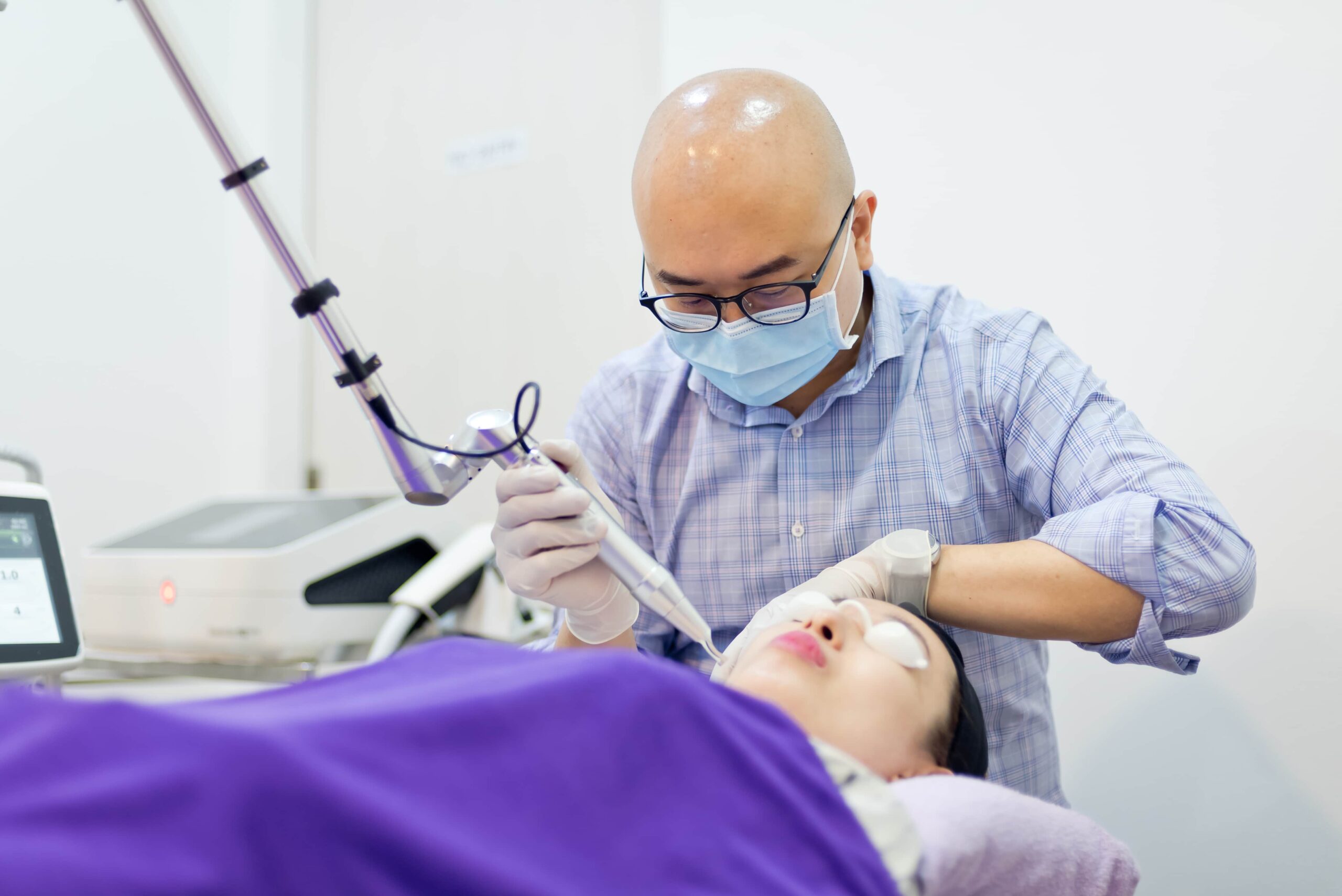
Treatment of skin problems in Asian skin types can be tricky—eliminating pigmentation as quickly as possible while still reducing the risk of post-inflammatory hyperpigmentation can prove to be quite difficult.
The treatment protocols for Asian skin must be gentle, and laser settings precise. The treatment program also should be gradual (preferably over a few months).
A well-balanced Q-switched laser program can specifically treat almost all kinds of pigmentations such as aged spots and sunspots, and on various regions in addition to the face (e.g. hands and neck).
At the Ogee Clinic, we employ a combination of in-clinic treatments as well as home-use topical treatment creams for effective results.
Sun avoidance and sun protection (e.g. sunblock) is emphasised to every patient because there is always a risk of recurrence.
Erbium lasers like the Fotona SP Dynamis provide pigmentation reduction, fine line reduction, increased glow, as well as a tighter skin tone.
With the addition of our Pro Yellow Laser, we have a luxurious suite of laser technologies at our disposal that are effective yet gentle to the skin.
Are CO2 Lasers Bad For Asian Skin?
In short, no—it depends on how these lasers are being performed. CO2 laser is an ablative laser, meaning a certain thickness of the skin will be reduced during the laser procedure.
For some skin or aesthetic conditions, an ablative laser protocol is still a preferred treatment method.
In later generations of CO2 lasers, safety and downtime have become much more improved for the patient.
Moreover, the recent development of newer ablative laser technologies like the Fotona Erbium YAG laser allows for similar effectiveness with much-reduced downtime, especially for the Asian skin.
Can IPL Be Used on Asian skin?
In essence, yes. IPL can be used for darker skin types, but the settings of the device must be precise; otherwise, post-inflammatory hyperpigmentation (PIH) may develop.
We see the highest incidence of PIH and skin burns from IPL procedures from other salons/clinics than with any other devices.
Can Chemical Peels Be Used For Asian Skin Types?
It depends on the condition that it is being used for, as well as the strength of the chemical peel.
For instance, the use of salicylic acid on acne lesions or acne-prone skin is common. Anything higher than 2%, or prolonged usage, is not recommended because even if salicylic acid is effective, the recovering lesions may develop PIH marks.
It is also not advisable to use strong alpha-hydroxy acids (AHA) or poly-hydroxy acids (PHA) on a regular basis as the risk of skin irritation is high in Asians.
Dr Heng on Treating Asian Skin Rejuvenation
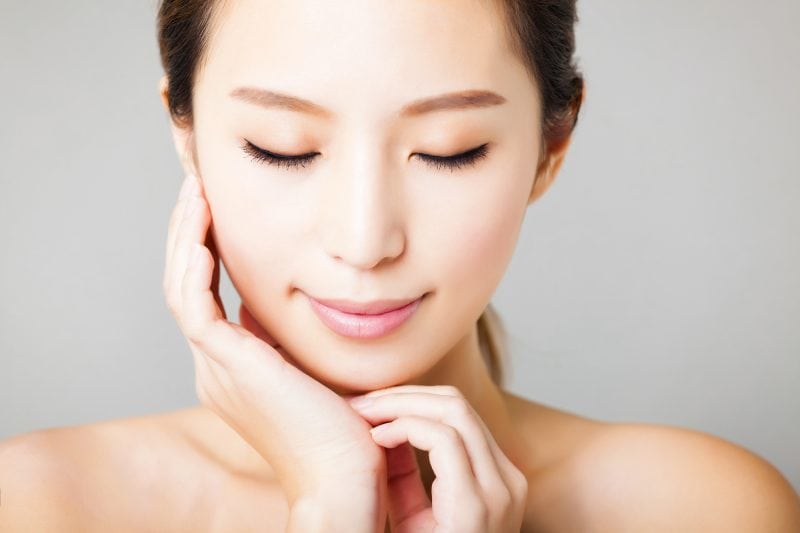
Aesthetic techniques that have gained popularity from the West must be adjusted to suit Asian skin. To achieve desirable treatment outcomes, I believe in customising various treatment techniques according to each patient’s demographics.
The hallmark of ageing Asian skin is characterized by pigmentary changes rather than fine lines and facial wrinkles. This is because Asian skin exhibits increased melanin activity, increased dermal thickness and collagen.
For pigmentation, I employ a gentle and progressive laser treatment program to effectively lighten pigmentation patches over time. Effective elimination of 80-90% of sunspots, melasma, and other forms of sun damage can be achieved in Asian skin while avoiding complications.
Topical creams and sun protection should be incorporated to ensure sustainable results.
Acne is one of the most common skin conditions affecting Asians. The challenge when treating acne is not just to bring down the inflamed lesions without irritating the skin, but also to reduce the risk of post-inflammatory hyperpigmentation to a minimum.
My favourite in-clinic treatment is our Acne Laser Program which is predominantly powered by the Pro Yellow Laser, followed by our Acne Clear therapy.
The weekly treatment targets various stages of acne lesions, as well as PIH, marks effectively. PIH marks, if left to heal without any intervention, will take months to years to resolve. With our Acne Laser Program and Acne Clear therapy, patients can see a marked improvement in two to three months.
When it comes to rejuvenation through using topical creams, my philosophy is: “first, do no harm”. Asian skin has been demonstrated to be more sensitive than Caucasian skin types.
Thus, the traditional application of DIY chemical peels should be avoided. Even the traditionally effective retinoids have to be used with care when treating Asian skin. Only when the skin is not irritated, can the clinical effects of the topical treatments come through.
One of my go-to favourites is our Vitamin C with niacinamide serum, with both rejuvenating and anti-inflammatory properties. For keloid scars, excision surgery is not advisable for Asians because of their tendency to form hypertrophic scars.
My personal program involves regular administration of intralesional triamcinolone (steroids) into the keloid for size correction and vascular laser for colour correction of the keloids. After the keloids have diminished in size and colour intensity, maintenance therapy every 6-12 months may be necessary.
References
[1] Sardana K, Sharma RC, Sarkar R. Seasonal variation in acne vulgaris– myth or reality. J Dermatol 2002; 29: 484–488. 111
[2] Gfesser M, Worret WI. Seasonal variations in the severity of acne vulgaris. Int J Dermatol 1996; 35: 116–117
[3] Lee WJ, Park KH, Sohn MY, Lee WC, Lee SJ, Kim DW. Ultraviolet B irradiation increases the expression of inflammatory cytokines in cultured sebocytes. J Dermatol 2013; 40: 993–997
[4] Patra V, Byrne SN, Wolf P. The skin microbiome: is it affected by UVinduced Immune suppression? Front Microbiol 2016; 7: 1235
[5] Abad-Casintahan F, Chow SK, Goh CL, et al. Frequency and characteristics of acne-related post-inflammatory hyperpigmentation. J Dermatol. 2016;43(7):826-828
[6] Eimpunth S, Wanitphadeedecha R, Manuskiatti W. A focused review on acne-induced and aesthetic procedure-related postinflammatory hyperpigmentation in Asians. J Eur Acad Dermatol Venereol. 2013;27 Suppl 1:7-18.
[7] Lee E, Kim S, Lee J, Cho SA, Shin K. Ethnic differences in objective and subjective skin irritation response: an international study. Skin Res Technol. 2014;20(3):265-269.
[8] McCurdy JA., Jr Considerations in Asian cosmetic surgery. Facial Plast Surg Clin North Am. 2007;15:387–397
[9] Soltani AM, Francis CS, Motamed A, Karatsonyi AL, Hammoudeh JA, Sanchez-Lara PA, et al. Hypertrophic scarring in cleft lip repair: a comparison of incidence among ethnic groups. Clin Epidemiol. 2012;4:187–91


